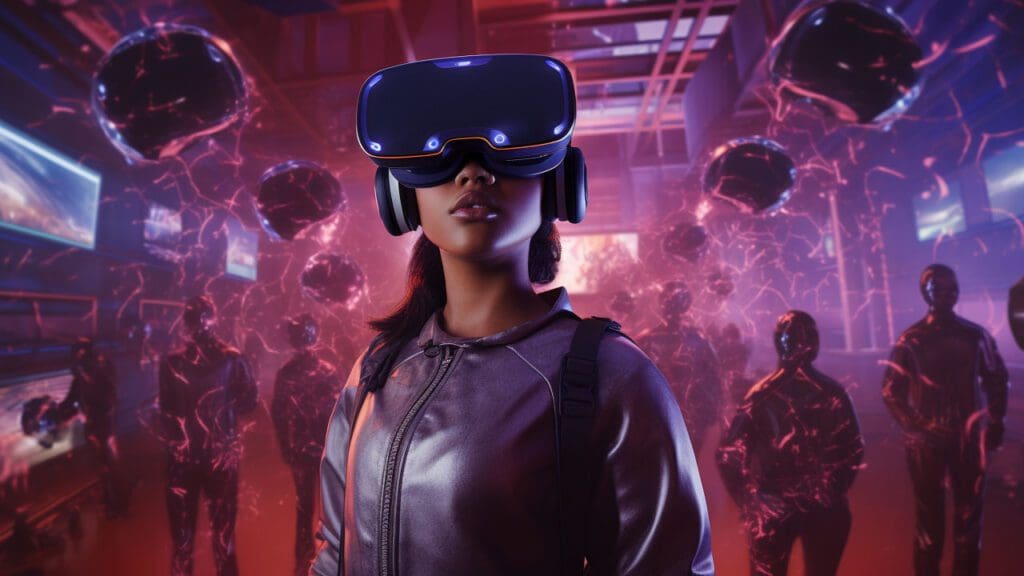
Inclusive Metaverse: Navigating a New World
Anxiety has become a prevalent aspect of daily life in the current uncertain environment, seemingly here to stay. In the face of these challenges, what opportunities does technology present for building inclusive communities, especially at a time when it’s increasingly difficult to truly hear and listen to each other?
Numerous consumer surveys worldwide consistently reflect a shared sentiment for 2022: a prevailing negativity about the present and future, with individuals grappling not only with economic and social issues but also facing threats to the sustainability of their daily lives. While sustainability has been a buzzword, there is still a considerable distance to cover before collective consciousness transforms, necessitating the exploration of new avenues for transitioning into more sustainable communities.
Concurrently, the media has been showcasing communication opportunities facilitated by the advancements in technology, pushing the boundaries of our imagination. However, a January consumer survey conducted by eMarketer reveals that 61 percent of society does not believe the metaverse will enhance their lives, and an equal proportion admits to not fully understanding the concept of the metaverse. In essence, despite the migration of meetings to the metaverse and the utilization of gamification technologies to strengthen communication with target audiences, tangible benefits for consumers have yet to materialize.
Visibility of disadvantaged individuals

Living in a world marked by social and economic inequality poses fresh challenges for everyone. The visibility of disadvantaged individuals in everyday life is progressively diminishing, making it more crucial than ever to address the widening wealth gap through increased solidarity. To foster inclusivity and accessible communities, a vital aspect of sustainability, it is essential to explore the new communication possibilities offered by technology.
Individuals facing disadvantages encounter numerous hurdles, from transportation barriers to limited opportunities to engage in various activities. It is plausible to envision a future where brands play a role in creating more inclusive communities within the metaverse. Although the initiatives of major brands in this realm are just beginning to surface, the metaverse holds the potential to be a key driver in establishing communities that are more inclusive and accessible in the coming years. While these technologies, such as virtual reality and artificial intelligence, are still in their infancy, we anticipate their widespread adoption in the near future, bringing virtual and real experiences closer together.
Looking ahead, there is an expectation that embracing the values of diversity, equality, and inclusion will become an integral part of the user experience. As these technologies evolve, the hope is for a future where the commitment to these values becomes even more pronounced, contributing to the creation of a more inclusive and equitable society.
Building a more inclusive metaverse

Meta has initiated long-term partnerships with companies sharing its vision of creating a more inclusive and accessible metaverse. Women in Immersive Tech Europe, an organization promoting the representation of women and disadvantaged communities in the technology sector, has collaborated with the United Spinal Association, working towards increased representation of disabled individuals on metaverse platforms, among other institutions.
Mintel’s Into the Metaverse 2022 research indicates that 60 percent of digital consumers believe the metaverse is not an inclusive environment. While representation and inclusion challenges also exist in the physical world, efforts are being made to address this issue in the metaverse.
An example is Metathon, the metaverse’s first marathon organized by the American deodorant brand Degree in partnership with Decentraland. Prior to the marathon, a comprehensive study was conducted to enhance the avatar library, allowing participants to incorporate elements such as wheelchairs or prosthetics, which may be limiting in physical marathons.
Initiatives like Metathon serve to raise awareness among participants and prompt the question: “Is it possible to provide more visibility to disadvantaged individuals in virtual experiences?” Examples can be found in campaigns for Autism Awareness Day on platforms like Roblox, indicating that the insight and technology are available to build more inclusive experiences.
In the Metaverse, designing a more inclusive experience begins with diversifying the avatars representing users. Advancements in this area have the potential to enable various social groups to access the same experiences simultaneously, overcoming physical barriers and providing individuals with access to experiences beyond those imposed by the physical world.
While improvements are still needed in the user experience, exploring ways to design experiences for more inclusive communities can empower brands to enhance communication with consumers and deepen brand connections.
You may also like this content
- Analyst Warns: Axie Infinity (AXS) in Danger of Fall
- Record Sale: Virtual Land in Axie Infinity Fetches $2.4 Million
- Zignaly Joins Forces with Blokopia: 2 Altcoins Shake Hands
Follow us on TWITTER (X) and be instantly informed about the latest developments…












